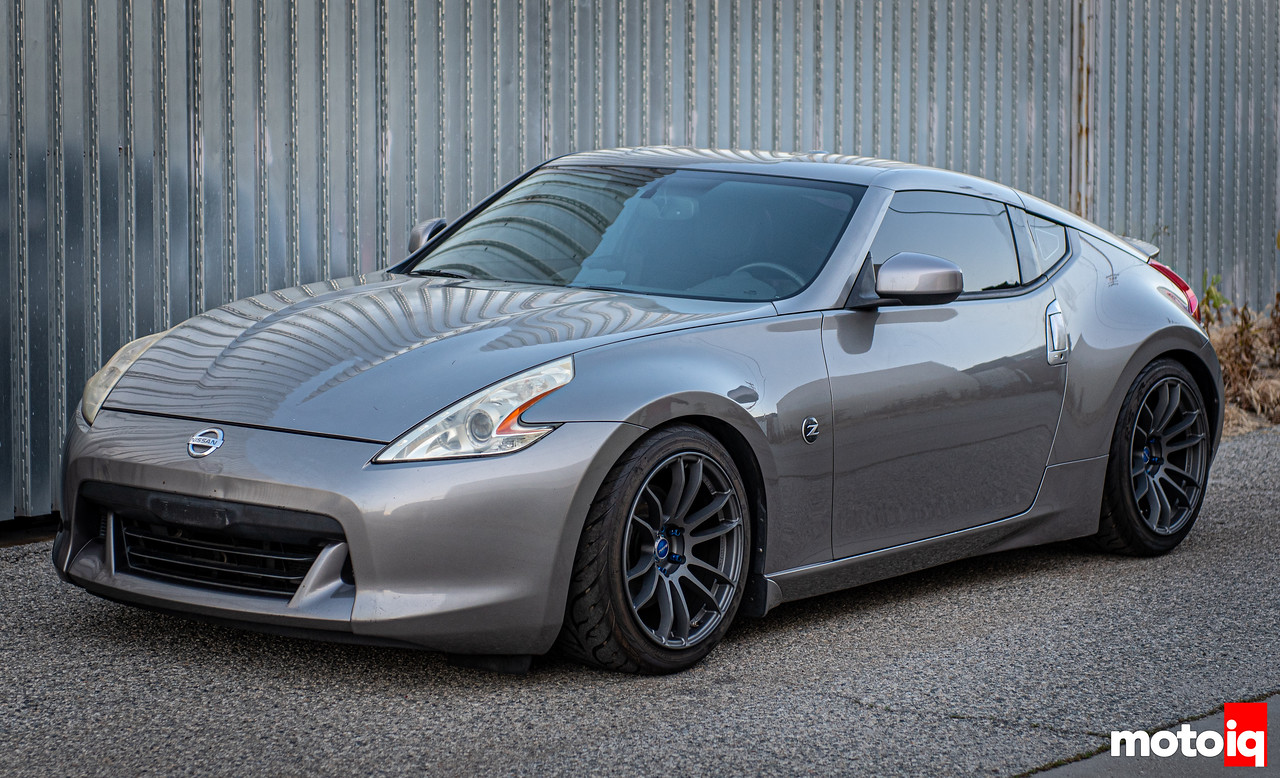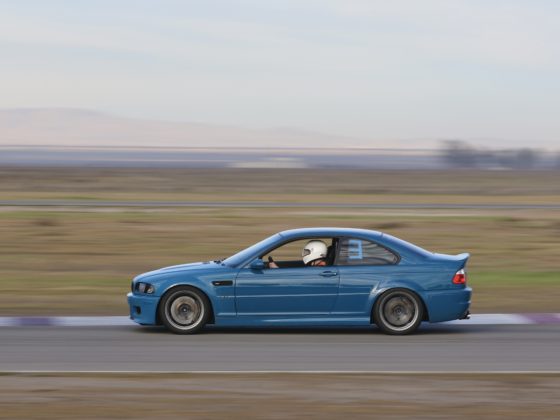
You have probably been following our build of an NA VQ37VHR engine and are probably dying to to see how much power we can get out of it and frankly so are we! In this episode we are going to be buttoning up our engine install and will get our engine running and tuned by Specialty Z, one of the leading tuners of late model Z cars in our area.
Part 1
Part 2
Part 3

With our VQ packing a stout 12:1 compression, it can stand to take advantage of higher octane fuel. E85 has a very high octane and also a higher latent heat of evaporation so the engine can run much cooler. It is also priced cheaper than gasoline. To enable us to run E85 with the least amount of hassle we used Specialty Z’s bolt in flex fuel kit, part number SZ_flexkit. Specialty Z’s kit makes use of an ethanol concentration sensor with the readings being converted to a 0-5 volt signal by a Zeitronix ECA-2 box, sending the conditioned sensor signal to an unused input on the ECU. With the flex fuel kit you can use gasoline, E85 or any blend of the two and the ECU will compensate seamlessly adjusting the air fuel ratio and timing for the most power no matter what the blend of ethanol in the fuel.
The Specialty Z kit has a pre-terminated wiring harness and OEM fuel hoses so the whole thing is really a direct plug and play system for an easy install.

Specialty Z uses an OEM grade GM Continental sensor to detect the ethanol concentration in the fuel. This is the same sensor that OEM’s use in there flex fuel vehicles so it is high quality, accurate, repeatable and affordable.

The Zeitronics ECA-2 box converts the signal from the sensor to two 0-5 volt outputs that a gauge or the ECU can use to interpret the ethanol percent concentration.

So we could know the percent of ethanol in our fuel real time, we used an Innovate Motorsports Ethanol Content and Fuel Temperature gauge part number 3912. We paired this with Innovates Oil Pressure and Temperature Gauge part number 3913




15 comments
This entire series was a real treat!! Feel free to put a dyno vid up on the motoiq youtube 🙂
What $/hp gain are we talking about here?
Around $200 per pony. It’s about $14k to replicate this engine build.
Seb tuned my car back in 2014 N/a and the same dyno I made more power and torque N/a on e85 than you did 371hp 291lbft. Except I had a stock rotating assembly and a dry sump. Recently had the car retuned and made 401hp after a switch to ecutek.
For us the owner didn’t want to go to long tube headers because he wanted backward compatibility with the stock exhaust system. He also didn’t want to spend more for a different air intake. Add the 5=10 more hp you get from dry sump and its right there.
I didn’t have long tubes either z1 shorties
That is pretty good, what sort of head work do you have?
Jun 272 cams and a better intake manifold
I’m saying that you spent 3-5k on a high comp motor that could have been used on an intake and an external oil pump to allow it to run past 8000 and been 20-hp higher. There isn’t a need to build these motors NA beyond cams. Only time it would be worth it is for a big displacement increase like Soho just did but even then they made like 3 more hp than my last retune at BTW.
I would have liked to run long tube headers and a different intake, but we can only do what a customer wants to do. To me a dry sump is pretty hard to integrate on a street car with AC and all, not to many customers will pop for that.
Excellent info and cool build! I was wondering why the Moroso check valves instead of a catch can for each bank? I assume the rest of the pcv system is kept as stock? I.e stock pcv valves still in place or the valve was drilled out? A little unclear as to how it was plumbed and why it was chosen over catch cans?
I’d like to know more about the PCV setup. What Moroso check valve part number was used?
With regards to the routing, the check valves are place inline with the rear port with the direction of the flow going from valvecover to intake pipe port. The front PCV valve is kept, along with the factory hose connecting to the front manifold vacuum ports. Is this correct?
I too would like any additional info on the check valve addition vs catch cans if possible.
Because the breather lines are actively part of the sealed crankcase and the VVEL system not being under throttle control and not being able to have an open breather. Routing them to a catch can would be a big vacuum leak and the RPM could run away.
I understand your reply but only see potential of a vacuum leak if you were venting the cans to atmosphere otherwise its still closed loop system. I think this was an initial misunderstanding on my part. I thought the check valves were initially inline with the pcv valve loops. Hence asking why cans were not put inline with the pcv valve loops Instead and doubling valves in the loop.
If I understand the plumbing it looks like those are the rear valvecover breathers crossed over to opposite banks intake with moroso valve inline. Does this balance pressure across banks vs stocks same side rear valve cover breather to same side intake? Looks like the actual pcv valve loops are left alone?